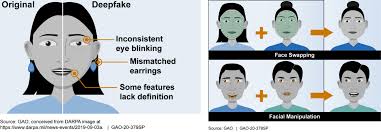In an era where artificial intelligence continues to reshape the landscape of communication, entertainment, and information, deepfakes and synthetic media have emerged as powerful yet controversial tools. These hyper-realistic, AI-generated images, videos, and audio clips can mimic real people with astonishing accuracy—sometimes too accurately. As their quality and accessibility improve, they raise complex questions about deepfake ethics, AI media integrity, and the urgent need for robust misinformation detection systems.
The Rise of Synthetic Media
Synthetic media, powered by deep learning algorithms, allows for the creation of content that blurs the line between fiction and reality. From face-swapping in entertainment to AI-generated voices in customer service, the applications seem endless—and not all of them are benign.
Deepfakes, in particular, have garnered notoriety. Originally a niche tool used in visual effects, deepfake technology has rapidly become mainstream. Today, anyone with a smartphone can access tools to fabricate realistic videos of public figures saying or doing things they never did. While some uses are humorous or artistic, others are malicious, targeting individuals for blackmail, political manipulation, or character assassination.
Deepfake Ethics: Who Bears the Responsibility?
One of the thorniest issues surrounding this technology is deepfake ethics. Who is accountable when synthetic media is used to deceive, defame, or disrupt? Is it the creator, the platform, or the developer of the AI tools?
Ethical concerns span multiple dimensions:
- Consent and privacy: Using someone’s likeness without permission can violate their rights, especially in non-consensual deepfake pornography or impersonations.
- Accountability: Anonymity on the internet makes it difficult to trace perpetrators.
- Impact on truth and trust: As synthetic media becomes harder to distinguish from reality, public trust in legitimate media may erode.
These ethical dilemmas are pushing governments, platforms, and developers to create clearer guidelines and legal frameworks around the use and misuse of AI-generated media.
AI Media Integrity: A New Digital Imperative
With synthetic content flooding digital channels, AI media integrity has become a critical concern. Media integrity refers to the reliability and authenticity of content in public discourse. As deepfakes become more sophisticated, maintaining that integrity becomes increasingly difficult.
Tech companies are racing to stay ahead of the curve by embedding watermarks, developing content provenance tools, and collaborating on AI standards. Initiatives like the Content Authenticity Initiative (CAI) and Microsoft’s Video Authenticator aim to detect and flag manipulated media, promoting transparency in digital ecosystems.
But technology alone isn’t enough. Media literacy must also evolve. Audiences need to be equipped with the skills to question and verify what they see and hear online. Just as antivirus software became standard in the age of malware, tools for identifying synthetic media will be essential for digital citizenship.
Misinformation Detection: Fighting Fire with Fire
Ironically, the same AI used to create deepfakes is also being deployed to detect them. Misinformation detection is a fast-growing field, combining machine learning, forensics, and human oversight to identify and counteract false narratives.
Modern detection tools analyze subtle inconsistencies in lighting, facial movements, or audio patterns to flag manipulated content. Social media platforms are also implementing automatic labeling, fact-checking partnerships, and user reporting systems to reduce the spread of misinformation.
Still, the arms race continues. As detection tools improve, so do the techniques for evasion. This back-and-forth highlights the need for global collaboration—across governments, tech companies, researchers, and civil society—to ensure the ethical use of AI media.
The Path Forward
Navigating the ethical minefield of deepfakes and synthetic media requires a multi-pronged approach:
- Regulation to define acceptable use and penalize abuse.
- Transparency from developers about how their tools can be used or misused.
- Public education to raise awareness and foster critical thinking.
- Technological innovation in detection and authentication systems.
Deepfakes are not inherently evil. Like many technologies, their impact depends on how they are used. With the right safeguards, synthetic media could empower creativity, enhance accessibility, and revolutionize storytelling. But without vigilance, it could also become one of the most dangerous tools in the disinformation arsenal.
As we move forward, balancing innovation with responsibility is key. The ethical challenges may be daunting, but addressing deepfake ethics, safeguarding AI media integrity, and strengthening misinformation detection efforts are essential steps toward a trustworthy digital future.







